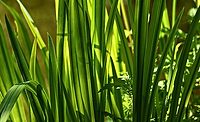New Paints Prevent Fouling of Ships' Hulls

To tackle other types of fouling as well (such as algae, mussels, sea squirts and moss animals), the researchers have developed a concept for producing optimized combinations of different antifouling agents, or biocides. The idea behind these optimized blends is to combine many different biocides that are effective against different fouling organisms, and adjust the balance between them to eliminate all types of fouling.To produce the formulas for these optimized blends, the researchers have also developed a model system where they weigh the effect of different biocides on different fouling organisms against their expected environmental risk. The blends are all equally effective but offer different levels of expected environmental risk.
Hi-Tech Paints
These optimized blends have been combined with hi-tech paint systems based on microcapsules – microscopic capsules made out of a polymer material that slowly release the biocides from the paint into the water. Field trials of painted test panels at the Sven Lovén Centre for Marine Sciences in Kristineberg have shown that the concept of optimized antifouling blends in bottom paints works very well.
Marine Paint’s research results for medetomidine have been passed to the commercial partner I-Tech AB to ensure that they are put into practice, and the product is now being marketed under the name Selektope.
The Marine Paint research programme was funded by the Mistra Foundation for Strategic Environmental Research from 2003 to 2011. For more information, visit their website.
Looking for a reprint of this article?
From high-res PDFs to custom plaques, order your copy today!









